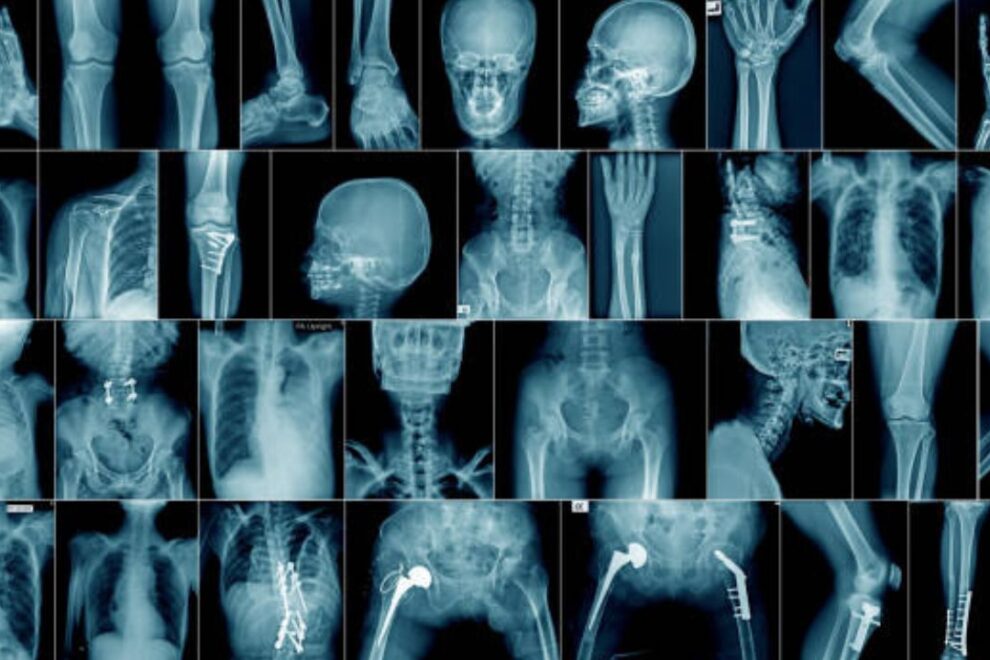Retrograde Pyelogram Surgery and Cost in India
What is a retrograde pyelogram?
A retrograde pyelogram is a type of x-ray that allows visualisation of the bladder, ureters, and renal pelvis. Generally, this test is performed during a procedure called cystoscopy - evaluation of the bladder with an endoscope (a long, flexible lighted tube). During a cystoscopy, contrast dye, which helps enhance the x-ray images, can be introduced into the ureters via a catheter.


Free Doctor Opinion
As the techniques and technology of ultrasound (high-frequency sound waves) and contrast dye have improved, other procedures such as intravenous pyelogram (IVP) and renal ultrasound have become more commonly used than retrograde pyelography.
What is an x-ray?
X-rays use invisible electromagnetic energy beams to produce images of internal tissues, bones, and organs on film. X-rays are made by using external radiation to produce images of the body, its organs, and other internal structures for diagnostic purposes. X-rays pass through body structures onto specially-treated plates (similar to camera film) and a “negative” type picture is made (the more solid a structure is, the whiter it appears on the film).
Other related procedures that may be used to diagnose problems of the upper urinary tract include kidney, ureters, and bladder (KUB) x-ray, computed tomography (CT scan) of the kidneys, renal ultrasound, renal angiogram, intravenous pyelogram, antegrade pyelogram, and renal venogram. Please see these procedures for additional information.
How does the urinary system work?
The body takes nutrients from food and converts them to energy. After the body has taken the food that it needs, waste products are left behind in the bowel and in the blood.
The urinary system keeps chemicals, such as potassium and sodium, and water in balance, and removes a type of waste, called urea, from the blood. Urea is produced when foods containing protein, such as meat, poultry, and certain vegetables, are broken down in the body. Urea is carried in the bloodstream to the kidneys.
Other important functions of the kidneys include blood pressure regulation, and the production of erythropoietin, which controls red blood cell production in the bone marrow.
Urinary system parts and their functions in India
two kidneys – a pair of purplish-brown organs located below the ribs toward the middle of the back. Their function is to in India : –
- remove liquid waste from the blood in the form of urine
- keep a stable balance of salts and other substances in the blood
- produce erythropoietin, a hormone that aids the formation of red blood cells
- regulate blood pressure
The kidneys remove urea from the blood through tiny filtering units called nephrons. Each nephron consists of a ball formed of small blood capillaries, called a glomerulus, and a small tube called a renal tubule. Urea, together with water and other waste substances, forms the urine as it passes through the nephrons and down the renal tubules of the kidney.
two ureters : – narrow tubes that carry urine from the kidneys to the bladder. Muscles in the ureter walls continually tighten and relax forcing urine downward, away from the kidneys. If urine backs up, or is allowed to stand still, a kidney infection can develop. About every 10 to 15 seconds, small amounts of urine are emptied into the bladder from the ureters.
bladder : – a triangle-shaped, hollow organ located in the lower abdomen. It is held in place by ligaments that are attached to other organs and the pelvic bones. The bladder’s walls relax and expand to store urine, and contract and flatten to empty urine through the urethra. The typical healthy adult bladder can store up to two cups of urine for two to five hours.
two sphincter muscles : – circular muscles that help keep urine from leaking by closing tightly like a rubber band around the opening of the bladder
nerves in the bladder : – alert a person when it is time to urinate, or empty the bladder
urethra : – the tube that allows urine to pass outside the body
Looking for a free cost estimate for Cosmetic Surgery in India abroad –click here
Or email at [email protected] / Call +91 9029304141
Reasons for the Procedure
A retrograde pyelogram may be used in persons suspected to have an obstruction, such as a tumor, stone, blood clot, or stricture (narrowing) in the kidneys or ureters. It evaluates the lower portion of the ureter to which urine flow is obstructed. A retrograde pyelogram is also used to evaluate placement of a catheter or a ureteral stent – a wire mesh designed to prop open the ureter.
An advantage of the retrograde pyelogram is that it can be performed even if the patient is allergic to contrast dye because a minimal amount of the contrast dye is absorbed by the body (unlike another more common test called an intravenous pyelogram). The procedure may also be performed on persons with impaired kidney function.
There may be other reasons for your physician to recommend a retrograde pyelogram.
Risks of the Procedure
You may want to ask your physician about the amount of radiation used during the procedure and the risks related to your particular situation. It is a good idea to keep a record of your past history of radiation exposure, such as previous scans and other types of x-rays, so that you can inform your physician. Risks associated with radiation exposure may be related to the cumulative number of x-ray examinations and/or treatments over a long period of time.
If you are pregnant or suspect that you may be pregnant, you should notify your physician. Radiation exposure during pregnancy may lead to birth defects.
If contrast dye is used, there is a risk for allergic reaction to the dye. Patients who are allergic to or sensitive to medications, contrast dye, or iodine should notify their physician.
Patients with kidney failure or other kidney problems should notify their physician. In some cases, the contrast dye can cause kidney failure, especially if the person is taking Glucophage (a diabetic medication).
Possible complications of retrograde pyelogram include, but are not limited to, sepsis, urinary tract infection, bladder perforation, hemorrhage, nausea, and vomiting.
A retrograde pyelogram may be contraindicated for patients experiencing severe dehydration.
There may be other risks depending on your specific medical condition. Be sure to discuss any concerns with your physician prior to the procedure.
Certain factors or conditions may interfere with a retrograde pyelogram. These factors include, but are not limited to, the following: –
- feces or gas in the bowels
- barium in the intestines from a previous barium procedure
Before the Procedure in India
- Your physician will explain the procedure to you and offer you the opportunity to ask any questions that you might have about the procedure.
- You will be asked to sign a consent form that gives permission to do the procedure. Read the form carefully and ask questions if something is not clear.
- You will need to fast for a certain period of time prior to the procedure. Your physician will notify you how long to fast, whether for a few hours or overnight.
- If you are pregnant or suspect that you may be pregnant, you should notify your physician.
- Notify your physician if you have ever had a reaction to any contrast dye, or if you are allergic to iodine.
- Notify your physician if you are sensitive to or are allergic to any medications, latex, tape, and anesthetic agents (local and general).
- Notify your physician of all medications (prescribed and over-the-counter) and herbal supplements that you are taking.
- Notify your physician if you have a history of bleeding disorders or if you are taking any anticoagulant (blood-thinning) medications, aspirin, or other medications that affect blood clotting. It may be necessary for you to stop these medications prior to the procedure.
- A laxative may be prescribed the night before the test and a cleansing enema or suppository may be given a few hours before the procedure.
- You may receive a sedative prior to the procedure to help you relax. Because the sedative may make you drowsy, you will need to arrange for someone to drive you home.
- Based upon your medical condition, your physician may request other specific preparation.
During the Procedure in India
A retrograde pyelogram may be performed on an outpatient basis or as part of your stay in a hospital. Procedures may vary depending on your condition and your physician’s practices.
Generally, the retrograde pyelogram follows this process in India : –
- You will be asked to remove any clothing, jewelry, or other objects that may interfere with the procedure.
- If you are asked to remove clothing, you will be given a gown to wear.
- An intravenous (IV) line may be inserted in your arm or hand.
- You will be asked to lie face up on the x-ray table and place your legs in stirrups.
- You may receive a sedative or general anesthesia in the IV prior to the insertion of the endoscope.
- An endoscope will be inserted through the urethral opening and advanced into the bladder. Once the endoscope is in place, the bladder can be examined and a catheter may be inserted into one or both ureters.
- The contrast dye will be injected through the catheters.
- A series of x-rays will be taken at timed intervals.
- The catheter will be removed.
- The physician will check for retention of the contrast dye.
Do you have your medical reports; send us now for a free quote –click here
Or email at [email protected] / Call +91 9029304141
After the Procedure in India
Your recovery process will vary depending upon the type of procedure performed and your physician’s practices. After the procedure, you will be taken to the recovery room for observation. Once your blood pressure, pulse, and breathing are stable and you are alert, you will be taken to your hospital room or discharged to your home.
Your urine output will be monitored closely for volume and signs of blood. It may be red from even a small amount of blood. This is considered normal and does not necessarily indicate a problem. You may be instructed to continue monitoring your urine output for a day or so once you are at home.
You may experience pain when you urinate. Take a pain reliever for soreness as recommended by your physician. Aspirin or certain other pain medications may increase the chance of bleeding. Be sure to take only recommended medications.
Notify your physician to report any of the following in India : –
- fever and/or chills
- redness, swelling, or bleeding or other drainage from the urinary opening
- increased pain around the urinary opening
- increase in the amount of blood in your urine
- difficulty urinating
Your physician may give you additional or alternate instructions after the procedure, depending on your particular situation.
Wish to know our Cosmetic Surgery skills, send us your message – click here
Or email at [email protected] / Call +91 9029304141
Read Also :-
- Stenting for GI Tract Surgery: A Minimally Invasive Solution in Digestive Health
- Surrogacy Agency in India: Professional Guidance for Your Parenthood Journey
- Sigmoidoscopy Surgery in India: Early Detection and Affordable Care for Colon Health
- Advanced Spondylosis Surgery in India: Procedures, Costs & Leading Hospitals
- Stenting for GI Tract Surgery: A Minimally Invasive Solution in Digestive Health
- Sigmoid Colectomy in India: Advanced and Affordable Colon Surgery
Committed To Build Positive, Safe, Patient Focused Care.
High Quality
Care
Home Review
Medicine
All Advanced
Equipment
Book An Appointment

At We Care India, we offer complete medical services for your entire family, from routine check-ups to injury care, ensuring personalized attention and expert assistance for all your health needs.


